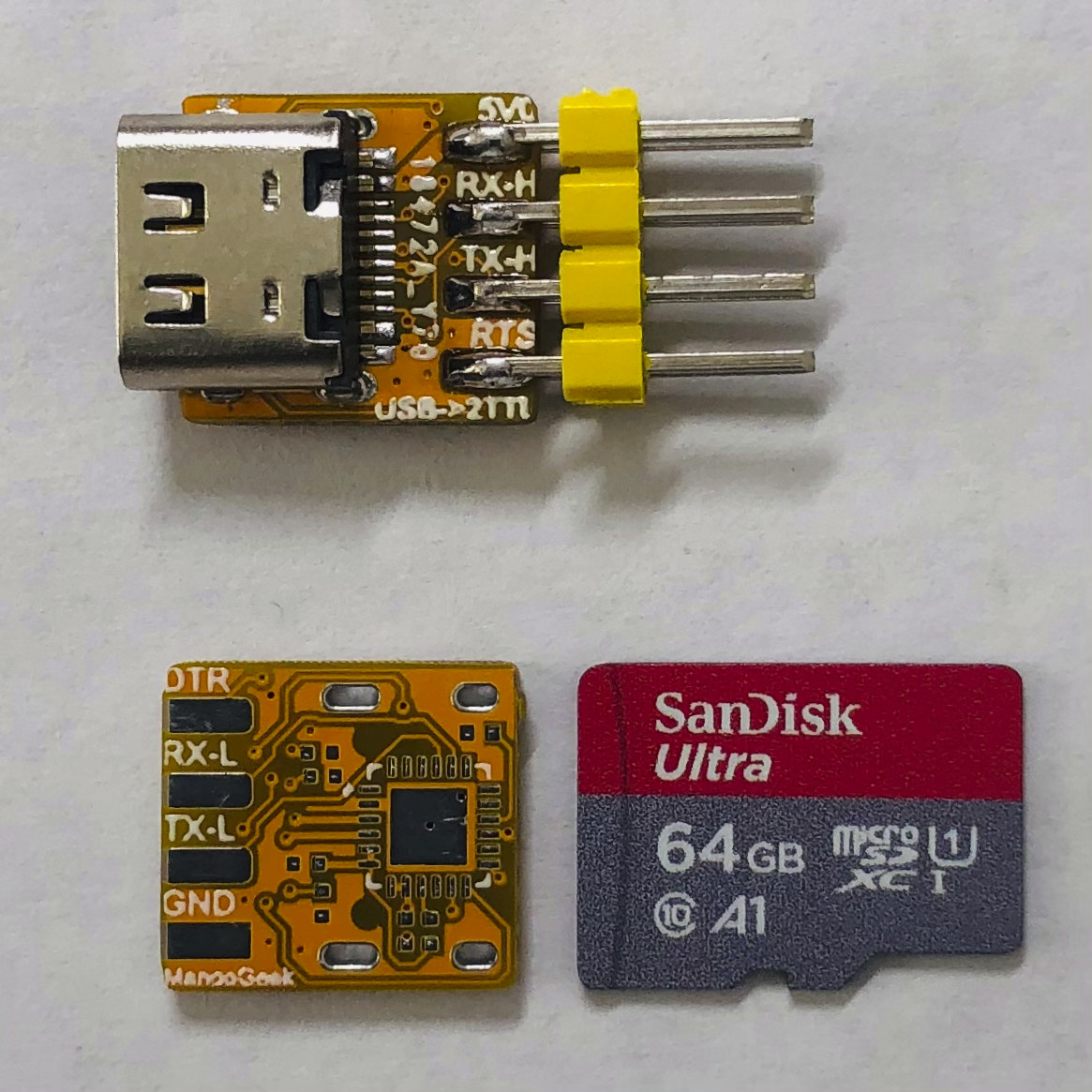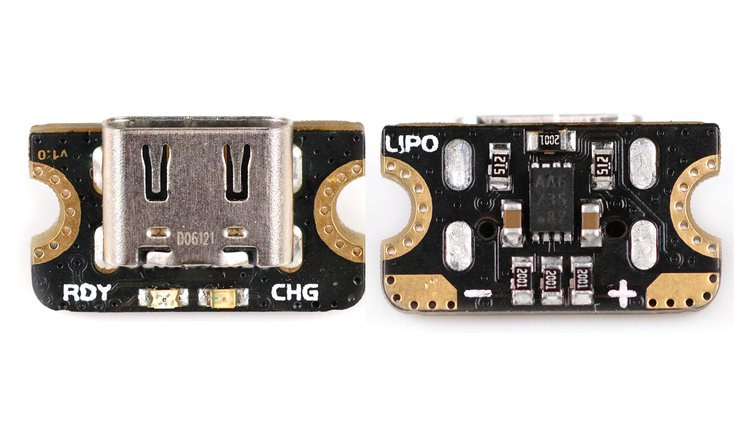The most touted advantages of the USB Type-C port are that it is reversible, enables more reliable and faster charging, and extra features like DisplayPort alt mode. But it’s also about as small as the micro USB port, and yesterday I came across two really small board with a USB-C connector: Ant2 LiPo charger board and a TTL to USB debug board from MangoGeek with two serial ports.
MangoGeek dual serial to USB board
One the dual row header, with eight pins in total, is solder to the board, it’s about as big as a MicroSD card. The board is based on Silicon Labs CP2105 USB to dual UART bridge controller., and provides two Tx/Rx interfaces, DTR, RTS, 5V, and GND signals on the top and bottom of the board.
One of the UART ports could be used to access a Linux serial, and the other to transmit data. The main problem is that it must be very easy to lose…
https://twitter.com/i/status/1356110251016089604
I understand it’s just fresh from the oven and not yet available for sale. I did look for CP2105 on Aliexpress, and there are other similar dual serial USB debug boards, but none of them are quite as small. Size may be important for space-constrained projects, and weight for some battery-operated robots or drones.
Ant2 USB-C LiPo charger board
An even smaller USB-C board, albeit for a completely different use case, is Ant2 LiPo charger board measuring just 16 x 9 x 6 mm.
Ant2 specifications:
- Charge controller – Microchip MCP73831 in DFN package
- USB – USB Type-C port
- Charging current – 500 mA/100 mA
- Charging voltage – 4.20 V
- Status LED – Red – charging; Green – charged
The project is open-source hardware with the CircuitStudio schematics and PCB layout available on Github. If you need the board for your project, Beast Studio has launched it on Crowd Supply for $12 to $13.
The smallest USB-C microcontroller board?
I did not come across USB-C board with MCU yesterday, but in the past, I covered Seeed Studio XIAO board measuring 23.5 x 17.5 mm. It’s over twice the size of the board above, but it’s the smallest USB-C microcontroller board that I know of.

Jean-Luc started CNX Software in 2010 as a part-time endeavor, before quitting his job as a software engineering manager, and starting to write daily news, and reviews full time later in 2011.
Support CNX Software! Donate via cryptocurrencies, become a Patron on Patreon, or purchase goods on Amazon or Aliexpress. We also use affiliate links in articles to earn commissions if you make a purchase after clicking on those links.






